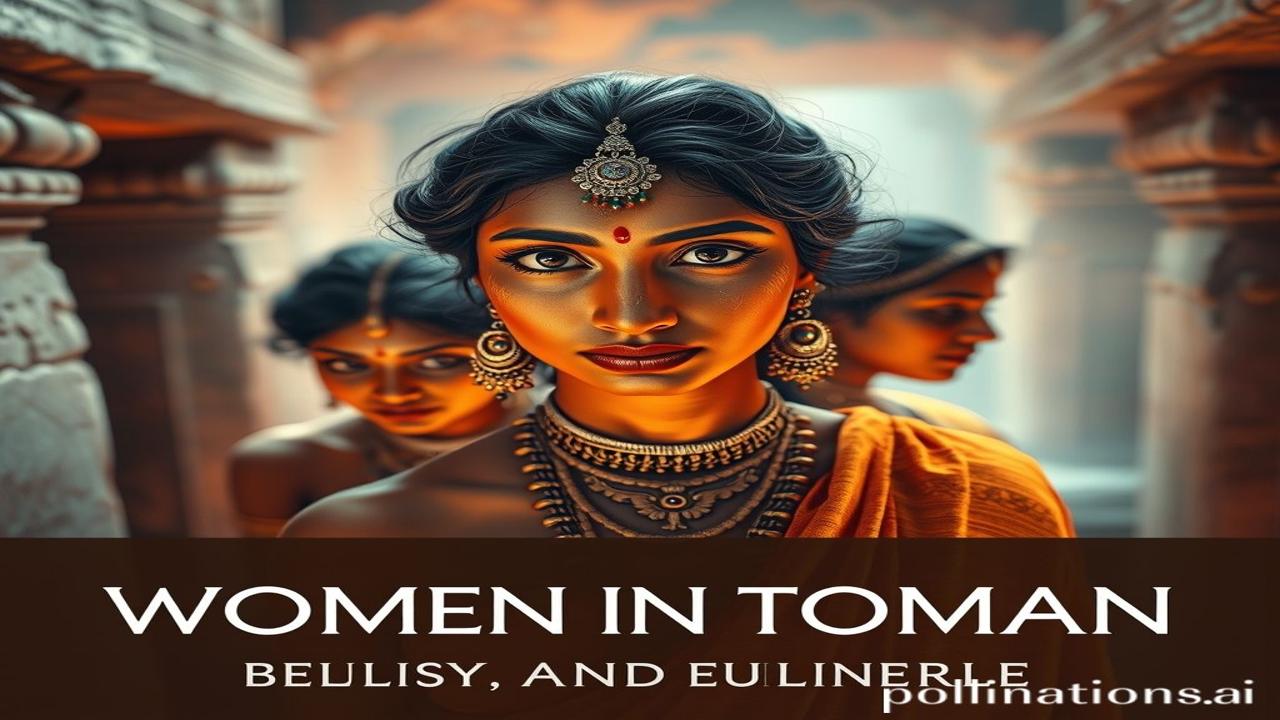Waqt Ki Deewaron Par Likhi Kahani: Women in Ancient Indian Inscriptions and Art
Kabhi socha hai, agar patthar bol sakte toh kya kehte? Agar purani gufao ki deewaren apni kahani khud sunati toh kiska zikr karti? Waqt ki dhool mein chhupi hui hai Bharat ki wo shakti, woh kala, jo humari dharohar hai – aur is dharohar mein shamil hain un women ki kahaniyan jinhone ancient India ko rang aur roop diya.
Historical & Cultural Context: A Glimpse into the Past
Ancient Indian inscriptions and art, from the Indus Valley Civilization (around 3300-1700 BCE) to the Gupta period (3rd-6th century CE), provide invaluable insights into the lives of women. These inscriptions, often etched on stone pillars, copper plates, and temple walls, were not just royal decrees but also records of donations, genealogies, and even expressions of devotion. Similarly, sculptures, paintings, and terracotta figurines offer visual representations of women’s roles, fashion, and societal positions.
Yeh sab isliye important hai kyunki hamare paas zyada written records nahi hain, specially about women. Inscriptions and art pieces are like whispers from the past, helping us piece together their stories, their challenges, and their contributions. They challenge the often male-dominated narratives presented in traditional texts.
ज़मीनी सच – लोग और जीवन: Echoes of Their Existence
Imagine Ma Rukmini, a devotee, contributing to the construction of a temple. Her name inscribed on a stone slab, a small act of piety immortalized in stone. Or picture a sculptor, diligently carving the image of a Yakshini, a female nature spirit, onto a temple gate. Her curves, her ornaments, a testament to the ideal of feminine beauty in that era.
Rulers & Donors: Inscriptions often mention queens and noblewomen as donors to religious institutions. Like, Queen Prabhavatigupta, a powerful ruler of the Vakataka dynasty (4th-5th century CE), who made land grants and oversaw the construction of temples. Her story is not just about power, but also about patronage and devotion. “Main Prabhavatigupta, Dharmapriya, iss mandir ko yeh zameen arpan karti hoon…” you can almost hear her words echoing.
Artisans & Dancers: Ajanta and Ellora caves are filled with paintings and sculptures depicting women in various roles – dancers, musicians, attendants, and even warriors. The fluidity of their movements, the grace of their postures, all speak of their artistic prowess and their place in the cultural landscape. “Dekho, woh apsara kitni sundar hai! Uski anguliyaan hawa mein nache hain, jaise koi mantra likh rahi ho…” a young artisan might whisper, mesmerized by his work.
Farmers & Warriors: While direct representations of women farmers might be less common, their contribution to agriculture and rural life is undeniable. Similarly, although less frequently depicted, some inscriptions hint at women participating in warfare, either directly or in supporting roles.
धरोहर और पहचान: Resonances in Modern India
Today, these glimpses of women in ancient India resonate with our understanding of “Bharatiyata.” The dedication, strength, and artistry that they represent continue to inspire. We see echoes of their influence in:
- Temple Art & Architecture: The sculptures and motifs adorning temples across India, often featuring goddesses and female figures, continue to be sources of artistic inspiration.
- Dance & Music: Classical dance forms like Bharatanatyam and Odissi draw heavily from ancient sculptures and paintings, preserving the grace and movements of women from centuries ago.
- Rituals & Festivals: The veneration of female deities like Durga, Lakshmi, and Saraswati continues to be a central aspect of Hindu religious practices.
- Language & Values: The ideals of Shakti (feminine power), Lakshmi (prosperity), and Saraswati (knowledge) are deeply ingrained in Indian culture.
मजेदार तथ्य या भ्रम-भंजक: Unveiling the Truths
Myth: “Ancient India was purely patriarchal and oppressive to women.”
Reality: While patriarchal structures undoubtedly existed, inscriptions and art show a more nuanced picture. Women held positions of power, contributed to religious and cultural life, and enjoyed certain rights, particularly in early periods. The complexity of their roles often gets oversimplified.
Fun Fact: Some inscriptions even record the names of female scribes and engravers, showcasing that women were not just subjects of art but also creators of it.
दृश्य और भावनाएं: Painting the Past
Imagine the air thick with the scent of incense and flowers in a bustling temple courtyard. The temple walls, cool and smooth to the touch, are adorned with intricate carvings of goddesses and celestial beings. The rhythmic clang of temple bells echoes through the air, mingling with the chants of priests and the murmur of devotees.
Or picture a dusty workshop, the air filled with the clink of chisels and the smell of stone. A sculptor, sweat dripping from his brow, meticulously carves the delicate features of a Yakshini, bringing her to life with each stroke.
अंतिम विचार या उद्धरण: A Timeless Echo
These glimpses of women in ancient Indian inscriptions and art remind us that history is not just about kings and battles, but also about the lives, dreams, and contributions of ordinary people, especially women. Their stories, etched in stone and captured in art, continue to inspire us to seek a more equitable and inclusive future.
“Yatra naryastu pujyante, ramante tatra Devata” – Where women are honored, there the Gods rejoice. This shloka, though widely known, truly reflects the ideal that ancient India, in its best moments, aspired to.
